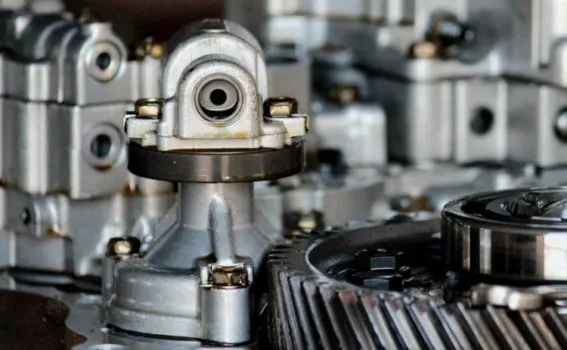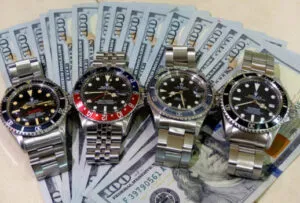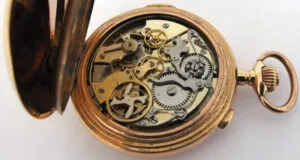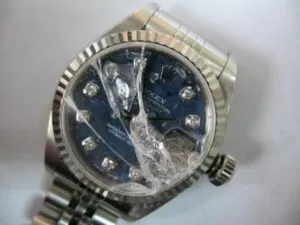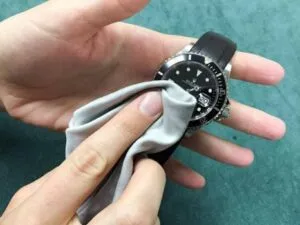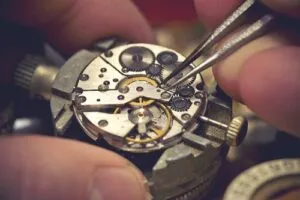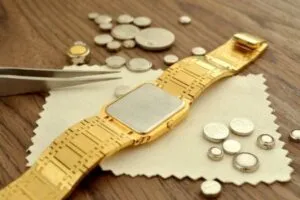Whether you’re planning on buying a new watch or you just want to know a little more about how they work; understanding the parts of a watch is an excellent place to start. Watches are incredibly complex feats of engineering some contain over 3000 parts. In this article we will address the most basic parts of a watch.
The Parts of a Watch You Should Know
Here is a high level overview of the parts of a watch you should know. We will discuss each of these and more in the article below…
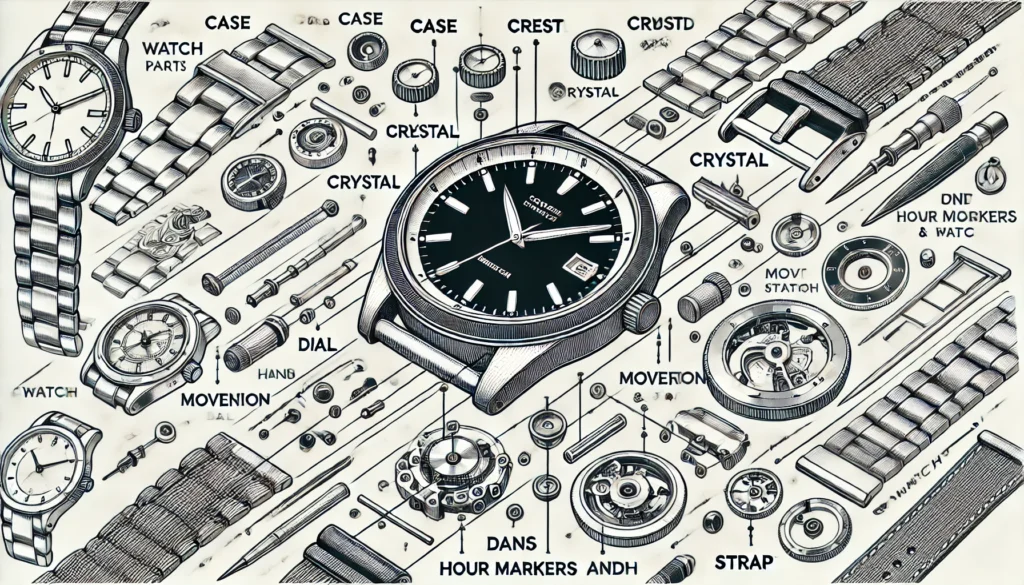
Bezel
The bezel is the ring that surrounds the face of the timepiece. It is sometimes decorated to make the timepiece look attractive, but it’s occasionally plain too. The bezel holds the crystal in position.
Case
The case is one of the most important parts of a watch. It is the housing of the watch, and it helps to keep all the parts secure and in the correct positions. If a watch were a human body, the case would be the skin. In most instances, watch cases are made from either plastic, metal, or ceramic.
Lugs
The Lugs are the part that extrude from the case that attach the strap or band to the case. There are various mechanisms used to attach a strap or band to the lugs, but the most common is a retractable pin.
Band or Strap
The band or strap is the piece that secures the watch on to your wrist. Typically the word band is used to describe metal material and strap is used to describe leather, rubber or fabric. It is common though to interchange the two words.
Crown
The crown is what you use to set the time on your watch. It is usually a small knob or dial at the side of the item, and you twist it clockwise or anticlockwise based on whether you want to move the time or function forwards or backwards.
Stem
The stem is the internal pin that connects the crown to the movement. It is important to recognize the relationship between the crown and the stem, because typcially when a crown is damaged, the stem is as well.
Crystal
The dial on your watch needs protection, and that is why the device has a crystal. That is the clear glass or plastic part that sits over your watch face. In some instances, the crystal can become scratched or damaged, but you can usually replace it without needing to buy a new timepiece. Crystals are typically made of acrylic, mineral glass, or sapphire.
Dial
The dial is the part of your watch that lets you know the time. It sits in between the movement and the crystal. You usually have two hands attached to the dial that point at its display. The dial is often what gives a watch it’s style with some type of color or design.
Hands
The hands on your watch at the little pointers that let you know the time. In most instances, you will have two or three hands on your watch. One for hours. One for the minutes, and sometimes, one for the seconds. On watches with a subdial, you may have additional hands on the smaller subdials.
Date
Some watches will display the date. It is often in a window located on the dial and it displays the day of the current month.
Hour marker
Hour markers are the little numbers that sit on the face of the dial. You use them to identify the time based on where the hands rest when you take a look through the crystal. Not all timepieces have hour markers.
Subdial
Some watches feature subdials. They are extra dials found on the face of your dial. Some watchmakers design them to show seconds or even provide a stopwatch function.
Movement
All the interior parts of your watch are collectively referred to as the movement, also known as the caliber. The movement is the engine of the timepiece, and it helps to ensure the entire device works properly and keeps perfect time. 3 types of movements that you should know are quartz, automatic, and mechanical.
Parts of a Watch You Should Know…
You should now have a much better understanding of the parts that make a watch, and so you will find yourself in a better position for grasping the concept. This should help serve as a reference to learn more about watches, but also can helpful to figure out the type of repair you need. Using the correct language to refer to the parts of a watch can help you communicate effectively with a professional technician.
